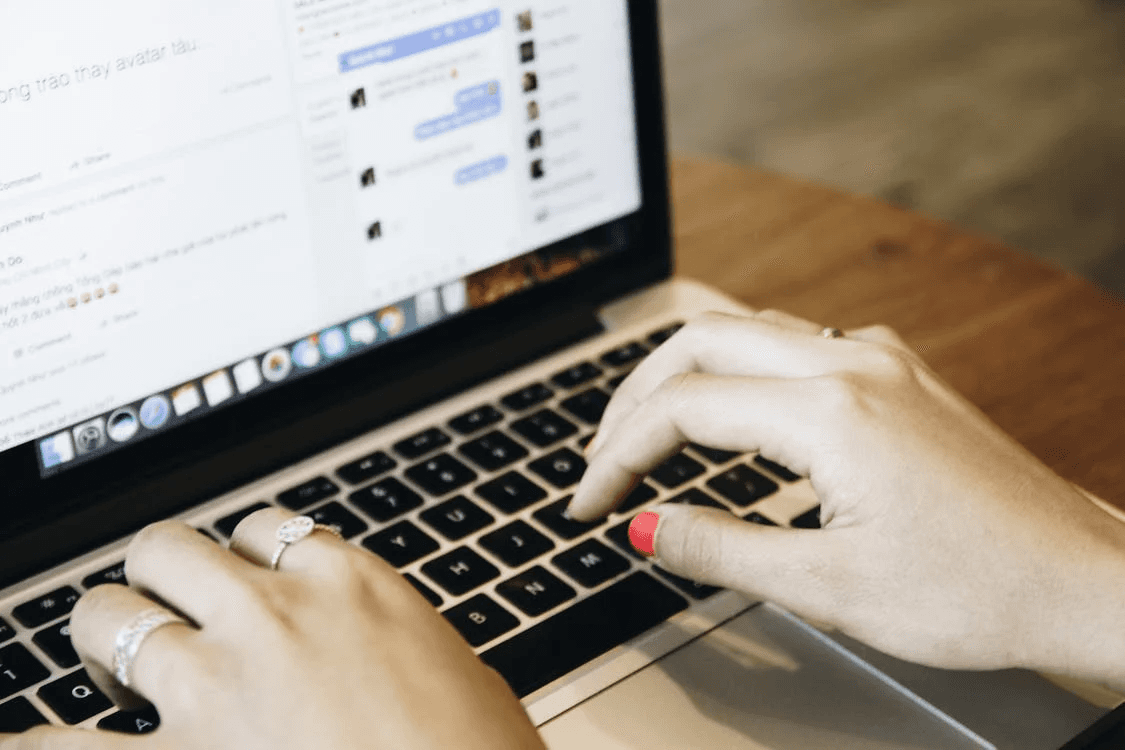Lead Generation
Lead vs Leash: Navigating Customer Outreach in Business
Discover the art of nurturing business leads—learn to differentiate between 'lead' and 'leash,' master personalized outreach, and avoid common pitfalls for successful lead generation and relationship building.
Feb 27, 2024

Ever found yourself scratching your head over pet terms? You're not alone! When it comes to your furry friend's accessories, you might wonder if a lead is just another word for a leash. It's a common mix-up that's easy to untangle.
What is a lead?

When diving into the world of business growth, understanding leads is crucial. Essentially, a lead is a potential customer who's shown interest in your product or service. Think of it as planting a seed that could grow into a strong sales tree.
Leads are often confused with guaranteed sales, but they're not the same. A lead is the first step in the sales process – it’s someone who's peeked through the door, not necessarily walked through it. To nurture a lead effectively, you'll want to engage with them, understand their needs, and guide them towards a decision.
Common Misconceptions and How to Avoid Them
One of the biggest missteps in handling leads is bombarding them with too much information at once. You wouldn't ask someone to marry you on the first date, right? It’s the same with leads – take the time to build a relationship.
Many also make the mistake of not following up. If you've grabbed their attention once, chances are they're waiting to hear from you again. Don't leave them hanging.
Effective Techniques for Lead Generation
Different strokes for different folks – and the same goes for acquiring leads. Cold emails and LinkedIn outreach have become popular methods. Each has its own set of best practices:
For cold emails:
For LinkedIn outreach:
Incorporating Best Practices
To see the best results, mix different techniques and track what works. For example, use LinkedIn to warm up cold leads before sending an email. Always measure engagement rates – number of replies, click-throughs, and subsequent conversations. This will help you refine your approach over time.
What is a leash?
Picture this: You're taking your dog out for a walk and there's a leash connecting you to your furry friend. In the same way, think of a leash in sales as the connection between your business and potential customers. It's the tool that keeps you linked, allowing you to guide and nurture the relationship.
There's a common mistake where businesses treat the leash like a rope in a tug-of-war game, exerting too much pressure and ultimately driving leads away. Remember, just as with walking a dog, you need a gentle hand and the right approach to keep the connection strong without overwhelming your lead.
Practical Tips for leash handling in business:
Keep it Flexible: Your leads need space to breathe and decide. Imagine a dog walking happily on a leash with slack; that's how your leads should feel - not choked and eager to escape.
Controlled Guidance: Steer your business conversations just like you would guide a dog to the right path, gently directing without forcing the route.
Respond to Pulls: When your lead shows interest or concern, respond as you would to a dog tugging on the leash - with attention and care, evaluating what your lead needs at that moment.
Different techniques exist for maintaining this metaphorical leash. Email marketing, for instance, requires a balance of informative content and a personal touch. Cold emailing or LinkedIn outreach should feel like starting a friendly conversation, not a sales pitch. The tone and frequency are vital: too much and you might scare them off, too little and they might wander away.
Incorporating good leash practices means:
Personalizing Outreach: Start with their name, reference a piece of their work you admire, or mention a common interest.
Valuable Content: Don't just sell; educate your leads. Give them content that benefits them regardless of whether they make a purchase.
Follow-up Etiquette: Just like you wouldn't pull on a leash constantly, don't send follow-up messages too often. Space out your communications strategically.
The best route to take? Test different methods, track the reactions you receive, and always be ready to adjust your approach. This way, you build a relationship with your leads that's hinged on trust and value, much like a well-trained dog who knows the leash means an enjoyable walk is about to happen.
Understanding the difference
When diving into the nuances of leads and leashes, it's like comparing gardening tools—you've got to choose the right one for the job. A lead in sales is like a seed; you've planted it hoping it'll grow into a flourishing relationship. On the other hand, think of the leash as the hose you use, guiding the water flow to nurture the seeds you've sown.
Let’s break it down further. You've likely heard the phrase cold emailing thrown around, right? It's a common method to gather new leads, akin to scattering seeds in the hope that some will take root. But where folks often trip up is by turning that introductory email into a hard sell—like flooding seeds with water, it can be overwhelming and counterproductive. Instead, aim for a sprinkle, a message that's brief, personalized, and opens the door for dialogue.
LinkedIn outreach is another beast. Picture a garden party where professional networking happens—your message needs to stand out. The common blunder here is being too generic. Imagine giving every person at the party the same compliment; it won't make anyone feel special. Tailor your approach. Start a conversation with substance, referencing a specific detail in their profile or work.
As for techniques:
A/B Testing: Try two different approaches and see which one yields better results, just as you might plant seeds in different soils.
Follow-Up Messages: Keep these light but persistent, akin to consistently watering your plants.
There are various methods to handle leads effectively:
Email sequences tailored to the recipient’s industry
Engaging content that positions you as a thought leader
Connection requests on LinkedIn with a personal note
In terms of practice, it's about striking the delicate balance between persistence and patience. You wouldn’t tug on a leash too hard lest you lose trust. Similarly, don't bombard your leads with too much too soon, or they might recoil.
Start with crafting emails that provide value upfront. Think of giving a sample of premium fertilizer to showcase the potential yield. Offer insights or solutions to common industry problems in your initial communications and watch as your seedlings—leads—begin to trust and grow towards you.
When to use a lead

Think of generating leads like fishing in a vast digital ocean. You've got your tackle box stocked with various baits—cold emails and LinkedIn requests, perhaps. Knowing when to use each lure is key to a successful catch.
Cold emails are your standard bait. They're versatile, but you've got to personalize your message. Imagine if someone handed you a flyer on the street—wouldn't you be more likely to read it if it had your name and interests on it? That's your cold email—tailored to grab attention.
LinkedIn outreach, on the other hand, is like a carefully chosen lure for the specific fish you're after. Connect with potential leads by commenting on their posts or mentioning mutual interests. Personal connections hook them better.
Here's the catch: don't send generic messages. You're not blasting a loudspeaker underwater, hoping fish will jump into the boat. Personalize and provide value. It's like whispering to each fish, telling them why your boat's the place to be.
Avoid these common missteps:
Sending too much information. Overwhelm leads and they'll swim off.
Failing to follow up. If they nibbled but didn't bite, keep the conversation going—gently.
Neglecting to provide value. Always offer a tasty morsel of info they can use.
Experiment with techniques:
A/B testing in cold emails. See which messages reel 'em in.
Varied connection requests on LinkedIn. Mix professional with personal touches.
Incorporate these practices with finesse:
Craft engaging subject lines for emails. Make 'em irresistible.
Share relevant content. Show you know what they care about.
Ultimately, your aim is to make leads feel understood, not sold to. Flexibility and patience are your allies here. Like finding the right spot on the lake, it's about testing different approaches until you find where the fish are biting. Remember to keep your 'leash' close at hand, ready to gently guide them towards your offer when the moment's right.
When to use a leash
Imagine you're at a park. You've got a frisbee, and a few meters away, there's your eager dog. Without a leash, there's an element of unpredictability – will your dog sprint off after a squirrel, or will it focus on the game? In your business outreach, using a leash relates to maintaining control over your interactions with potential leads. It's about knowing when to give them space and when to reel them in for more direct engagement.
Cold emails are your unleashed moments; you're throwing out a message, hoping it'll capture a lead's attention. But you've got to be mindful of the content. Just as a frisbee needs to be tossed precisely to catch, your emails need a personal touch to make sure they don't end up lost in the woods (or worse, the spam folder). Always tailor your approach:
Research your lead's interests and pain points.
Mention something recent and relevant to their business.
Keep it short, sweet, and value-packed.
What about the proverbial squirrels that might distract your leads away from your offerings? That's where follow-ups come in – the gentle tug on the leash to regain attention. A common mistake is either overdoing it and spamming their inbox or never following up, which drops the connection cold. Find a middle ground; send a couple of well-spaced and considerate reminders.
When you're walking down the path of LinkedIn outreach, think of the leash as your professional etiquette. Your connection requests and InMails should be polite, concise, and informative. You wouldn't jerk a leash suddenly without cause, so don’t surprise your prospects with a hard sell right away.
Start with a warm introduction.
State a clear reason for connecting.
Offer a snippet of value, like an insightful article or relevant statistic.
Different techniques come into play depending on the lead's behavior. If they're showing interest, you might want to tighten the leash by engaging in more frequent, detailed conversations. If they're hesitant, give them room with educational content that nudges them gently towards a decision.
Conclusion
Mastering the art of nurturing leads is crucial for your business growth. Remember, it's not just about the initial contact but how you engage and build a relationship with your potential customers. Personalize your approach, offer real value, and maintain a respectful frequency of communication. Whether it's through tailored cold emails or thoughtful LinkedIn messages, the key is to find the right balance—like holding a leash with just enough slack. Keep testing different strategies, be patient, and always focus on the needs of your leads. That's how you'll convert interest into loyalty and drive your business forward.
Frequently Asked Questions
What is the difference between a lead and a leash in the context of business growth?
A lead is a potential customer who has shown interest in your product or service, while a leash refers to maintaining control over your interactions with the lead, ensuring a measured and tailored approach to nurturing the relationship.
How important is it to nurture leads?
Nurturing leads is crucial as it involves engaging with them and understanding their needs, which can lead to higher conversion rates and business growth.
What are some effective techniques for lead generation?
Effective lead generation techniques include personalization of communication, incorporating a clear call-to-action, and offering value upfront to capture the interest of potential customers.
What is a common misconception about leads?
A common misconception is that bombarding leads with too much information is productive. Instead, leads should be approached with a tailored message and timely follow-ups.
Can you explain the use of leash in business outreach?
Using a leash in business outreach means to monitor and adjust how you interact with potential leads, including sending tailored messages and well-spaced follow-ups, based on the lead's interest and responses.
Why is personalization important in cold emails and LinkedIn outreach?
Personalization is important because it shows the lead that you understand their unique interests and pain points, which can significantly increase the chances of engagement and conversion.
How can you avoid overwhelming leads with too much information?
To avoid overwhelming leads, provide concise and relevant information. Follow up with additional details as the conversation progresses and the lead's interest is piqued.
What is A/B testing, and why should it be used in lead generation?
A/B testing involves experimenting with different techniques, messages, or call-to-actions to determine what resonates best with your target audience, improving the effectiveness of your lead generation efforts.
What role does patience play in lead nurturing?
Patience is key in lead nurturing as building a relationship with potential customers takes time. Flexibility and understanding are also important to respond effectively to the lead's behavior.
How should businesses adapt their approach with leads showing different behaviors?
Businesses should engage more frequently with leads showing interest and provide educational content for those who are hesitant. Adjusting the technique based on the lead's behavior ensures a more personalized and effective outreach strategy.

